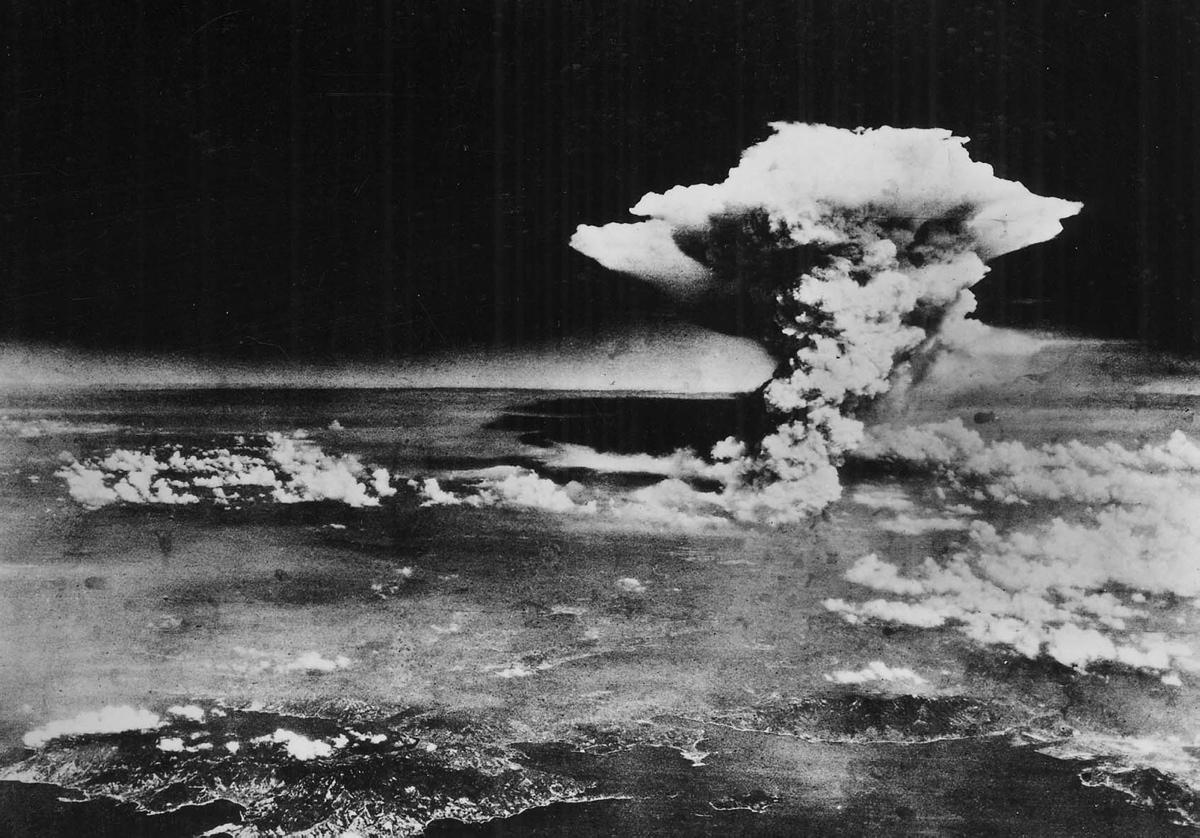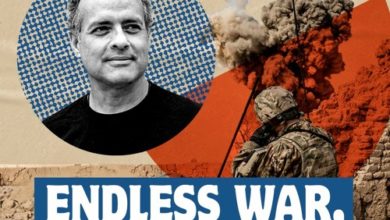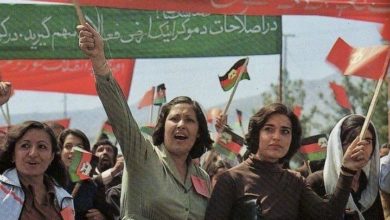In eastern Afghanistan, near the Pakistani border, a member of the resistance infiltrated a CIA compound and detonated an explosive belt, killing seven CIA operatives and wounding six others.
The CIA promptly vowed revenge for the attack. Some agents spoke candidly on the day of the bombing, chest-thumping that they were in this fight for the long haul. “There is no pullout [in 2011],” said one agent anonymously, “there is no withdrawal or anything like that planned.”
In a statement released by the CIA after the attack, the agency stated, referring to the casualties, that “we pledge to them and their families that we will never cease fighting for the cause to which they dedicated their lives—a safer America.”
This “noble cause” that the CIA and its agents are vowing to fight until the end did not begin in Afghanistan in response to the Sept. 11 attacks. CIA operations in the country began in the late 1970s.
Washington’s public rationale for why the U.S. government must fight in Afghanistan—lack of women’s rights, Islamic law, lack of education, and so on—have not always existed in Afghanistan. There is, in fact, a period during which Afghanistan was on a progressive path. In 1978, under the People’s Democratic Party of Afghanistan, women’s rights and anti-sexist laws were enacted for the first time in Afghanistan’s history. Schools began opening throughout the country and a literacy campaign was initiated. The government functioned on a secular, democratic platform, after a long feudal era.
As Afghanistan was building equality, increasing literacy and education and building a new progressive society, Washington was worried about one thing. The new government wanted independence and would not allow itself to be made a puppet serving the interests of U.S. capitalism. The CIA was promptly dispatched, not for a “safer America,” but for a safer region for U.S. companies to exert their dominance.
The CIA’s history in Afghanistan begins like this: spending billions of dollars to crush the only progressive period in the country’s history.
How did they do this? By heavily funding and fighting alongside the most reactionary religious organizations, who began killing and maiming women not observing the most fundamentalist interpretations of Islamic law, destroying schools and murdering scores of civilians throughout the country. Those CIA-backed forces then took state power, and ruled the country—while still receiving millions of dollars from the CIA. Then, they were overthrown by the CIA in 2001.
The CIA orchestrated the overthrow of the Taliban government in 2001, commanding the war with its operatives on the ground. One of those agents who masterminded the U.S. takeover in 2001, Henry Crumpton, recently spoke out about the CIA tactics used. He and his agents would visit tribal leaders, and offer them this ultimatum: “If you do not cooperate, the chances of your survival are greatly diminished.”
If that particular tribal leader refused to assist the invading foreign forces in his country, Crumpton and his team would openly murder him. Crumpton admitted, “And the next day, we’d talk to the tribal leader that was next door. … Given the incentive that we had set the previous day, he was much more amenable to negotiations in our favor.”
The terrorist tactics used by the CIA in Afghanistan make it obvious why their base was targeted.
The CIA has long commanded military operations, from its death squads in Latin America to bloody military coups in Africa, the Middle East, and Asia. But there has been a fundamental change in the CIA’s military role since 2001.
Now, the CIA is on the front lines in Afghanistan more so than in any other mission. Previously, the CIA primarily commanded U.S. military special operations troops, as well as local militias. The CIA’s own paramilitary branch, known as the Special Activities Division, was small and rarely used in lieu of U.S. and foreign troops.
After the Sept. 11 attacks, the Bush administration began the process of militarizing the CIA, which continues today. The Special Activities Division was increased in size and funding. They were given greater authority to clandestinely conduct military operations in Pakistan, Somalia, Yemen and other countries where U.S. troops are not legally allowed.
Now, instead of commanding U.S. or foreign military units and local reactionary militias, the CIA is increasingly conducting military operations with their own agents. They even operate out of their own firebases scattered all over Afghanistan and Iraq. This constitutes a major change in the structure of the CIA.
The growing trend of privatizing the military can be seen as the CIA militarizes. In addition to increasing their own number of troops, the CIA has also absorbed sectors of the notorious mercenary company known as Blackwater (now known as Xe).
It was recently revealed that the CEO of Blackwater, right-wing evangelical billionaire Eric Prince, works directly for the CIA. Blackwater troops became CIA troops, and have been conducting assassination campaigns and military operations in Pakistan and other countries.
But the CIA’s militarization spans beyond commanding their own troops. The CIA established a vast network of secret prisons, where suspects endure vicious illegal torture and absolutely no legal rights.
In addition, the CIA now has its own personal air force, commanding and piloting drones that are now being regularly used all over the world, conducting bombing missions in Afghanistan, Pakistan, Iraq, Yemen and elsewhere. The Obama administration recently approved even more funds to increase the CIA’s drone capabilities, putting bombs and missiles at their fingertips.
The CIA is playing a more direct role in U.S. wars than ever before. The U.S. ruling class wants the so-called “war on terror” to be shifted into the shadows.
The anti-war movement exploded in late 2002, drawing the largest anti-war demonstrations in history against the invasion of Iraq. The anti-war movement during the Vietnam War grew to a point where the U.S. government was forced to abandon its colonial aims in Vietnam. Now, the United States is involved in what is already the longest war in U.S. history, which is growing more unpopular everyday. The occupation of Iraq still has no end in sight. The Pentagon brass has made it clear that we should brace for a long and bloody fight in Afghanistan. Additionally, U.S. imperialism has goals elsewhere in the region.
Capitalism has developed into a global economic system. The United States and a handful of countries in Western Europe have competed with each other to dominate the markets and resources of the rest of the world for the past century. They have also cooperated together in their joint struggle against socialism or against independent non-socialist governments in the developing world.
This has led to the bloodiest century in human history and shows no signs of abating.
One way that the militarization of the CIA benefits the ruling class is that it allows the U.S. government to substitute other forces for those the U.S. military would have deployed. U.S. military operations are much more subject to publicity and scrutiny, but clandestine CIA operations are ambiguous. Working in the shadows allows the government to deny its own role in secret bombings, targeted assassinations and economic sabotage in other countries. The history of the CIA includes the most blatantly criminal military operations, using the most brutal and murderous tactics to overthrow popular, democratically elected governments who do not submit to U.S. corporations, and installing the most reactionary and repressive dictators, from Guatemala, to Iran, to Haiti, to the Congo, and countless others. If U.S. troops deployed to conduct these operations, there would have been even greater public outcry. But they are instead conducted in the shadows, to mask the true nature of the system we live under.
Outright military invasion is often a last resort for the ruling class, when their other methods have failed to achieve their goals of economic domination. With the changing role of the CIA, the extent of the capabilities of conducting covert operations has been stretched to new boundaries. The CIA can now deploy its own soldiers, pilot its own bombing missions and manage its own prison apparatus.
In eastern Afghanistan, near the Pakistani border, a member of the resistance infiltrated a CIA compound and detonated an explosive belt, killing seven CIA operatives and wounding six others.
The CIA promptly vowed revenge for the attack. Some agents spoke candidly on the day of the
|
 CIA agents in Afghanistan in 2001. CIA agents in Afghanistan in 2001.
|
bombing, chest-thumping that they were in this fight for the long haul. “There is no pullout [in 2011],” said one agent anonymously, “there is no withdrawal or anything like that planned.”
In a statement released by the CIA after the attack, the agency stated, referring to the casualties, that “we pledge to them and their families that we will never cease fighting for the cause to which they dedicated their lives—a safer America.”
This “noble cause” that the CIA and its agents are vowing to fight until the end did not begin in Afghanistan in response to the Sept. 11 attacks. CIA operations in the country began in the late 1970s.
Washington’s public rationale for why the U.S. government must fight in Afghanistan—lack of women’s rights, Islamic law, lack of education, and so on—have not always existed in Afghanistan. There is, in fact, a period during which Afghanistan was on a progressive path. In 1978, under the People’s Democratic Party of Afghanistan, women’s rights and anti-sexist laws were enacted for the first time in Afghanistan’s history. Schools began opening throughout the country and a literacy campaign was initiated. The government functioned on a secular, democratic platform, after a long feudal era.
As Afghanistan was building equality, increasing literacy and education and building a new progressive society, Washington was worried about one thing. The new government wanted independence and would not allow itself to be made a puppet serving the interests of U.S. capitalism. The CIA was promptly dispatched, not for a “safer America,” but for a safer region for U.S. companies to exert their dominance.
The CIA’s history in Afghanistan begins like this: spending billions of dollars to crush the only progressive period in the country’s history.
How did they do this? By heavily funding and fighting alongside the most reactionary religious organizations, who began killing and maiming women not observing the most fundamentalist interpretations of Islamic law, destroying schools and murdering scores of civilians throughout the country. Those CIA-backed forces then took state power, and ruled the country—while still receiving millions of dollars from the CIA. Then, they were overthrown by the CIA in 2001.
The CIA orchestrated the overthrow of the Taliban government in 2001, commanding the war with its operatives on the ground. One of those agents who masterminded the U.S. takeover in 2001, Henry Crumpton, recently spoke out about the CIA tactics used. He and his agents would visit tribal leaders, and offer them this ultimatum: “If you do not cooperate, the chances of your survival are greatly diminished.”
If that particular tribal leader refused to assist the invading foreign forces in his country, Crumpton and his team would openly murder him. Crumpton admitted, “And the next day, we’d talk to the tribal leader that was next door. … Given the incentive that we had set the previous day, he was much more amenable to negotiations in our favor.”
The terrorist tactics used by the CIA in Afghanistan make it obvious why their base was targeted.
The CIA has long commanded military operations, from its death squads in Latin America to bloody military coups in Africa, the Middle East, and Asia. But there has been a fundamental change in the CIA’s military role since 2001.
Now, the CIA is on the front lines in Afghanistan more so than in any other mission. Previously, the CIA primarily commanded U.S. military special operations troops, as well as local militias. The CIA’s own paramilitary branch, known as the Special Activities Division, was small and rarely used in lieu of U.S. and foreign troops.
After the Sept. 11 attacks, the Bush administration began the process of militarizing the CIA, which continues today. The Special Activities Division was increased in size and funding. They were given greater authority to clandestinely conduct military operations in Pakistan, Somalia, Yemen and other countries where U.S. troops are not legally allowed.
Now, instead of commanding U.S. or foreign military units and local reactionary militias, the CIA is increasingly conducting military operations with their own agents. They even operate out of their own firebases scattered all over Afghanistan and Iraq. This constitutes a major change in the structure of the CIA.
The growing trend of privatizing the military can be seen as the CIA militarizes. In addition to increasing their own number of troops, the CIA has also absorbed sectors of the notorious mercenary company known as Blackwater (now known as Xe).
It was recently revealed that the CEO of Blackwater, right-wing evangelical billionaire Eric Prince, works directly for the CIA. Blackwater troops became CIA troops, and have been conducting assassination campaigns and military operations in Pakistan and other countries.
But the CIA’s militarization spans beyond commanding their own troops. The CIA established a vast network of secret prisons, where suspects endure vicious illegal torture and absolutely no legal rights.
In addition, the CIA now has its own personal air force, commanding and piloting drones that are now being regularly used all over the world, conducting bombing missions in Afghanistan, Pakistan, Iraq, Yemen and elsewhere. The Obama administration recently approved even more funds to increase the CIA’s drone capabilities, putting bombs and missiles at their fingertips.
The CIA is playing a more direct role in U.S. wars than ever before. The U.S. ruling class wants the so-called “war on terror” to be shifted into the shadows.
The anti-war movement exploded in late 2002, drawing the largest anti-war demonstrations in history against the invasion of Iraq. The anti-war movement during the Vietnam War grew to a point where the U.S. government was forced to abandon its colonial aims in Vietnam. Now, the United States is involved in what is already the longest war in U.S. history, which is growing more unpopular everyday. The occupation of Iraq still has no end in sight. The Pentagon brass has made it clear that we should brace for a long and bloody fight in Afghanistan. Additionally, U.S. imperialism has goals elsewhere in the region.
Capitalism has developed into a global economic system. The United States and a handful of countries in Western Europe have competed with each other to dominate the markets and resources of the rest of the world for the past century. They have also cooperated together in their joint struggle against socialism or against independent non-socialist governments in the developing world.
This has led to the bloodiest century in human history and shows no signs of abating.
One way that the militarization of the CIA benefits the ruling class is that it allows the U.S. government to substitute other forces for those the U.S. military would have deployed. U.S. military operations are much more subject to publicity and scrutiny, but clandestine CIA operations are ambiguous. Working in the shadows allows the government to deny its own role in secret bombings, targeted assassinations and economic sabotage in other countries. The history of the CIA includes the most blatantly criminal military operations, using the most brutal and murderous tactics to overthrow popular, democratically elected governments who do not submit to U.S. corporations, and installing the most reactionary and repressive dictators, from Guatemala, to Iran, to Haiti, to the Congo, and countless others. If U.S. troops deployed to conduct these operations, there would have been even greater public outcry. But they are instead conducted in the shadows, to mask the true nature of the system we live under.
Outright military invasion is often a last resort for the ruling class, when their other methods have failed to achieve their goals of economic domination. With the changing role of the CIA, the extent of the capabilities of conducting covert operations has been stretched to new boundaries. The CIA can now deploy its own soldiers, pilot its own bombing missions and manage its own prison apparatus.


 CIA agents in Afghanistan in 2001.
CIA agents in Afghanistan in 2001. 


